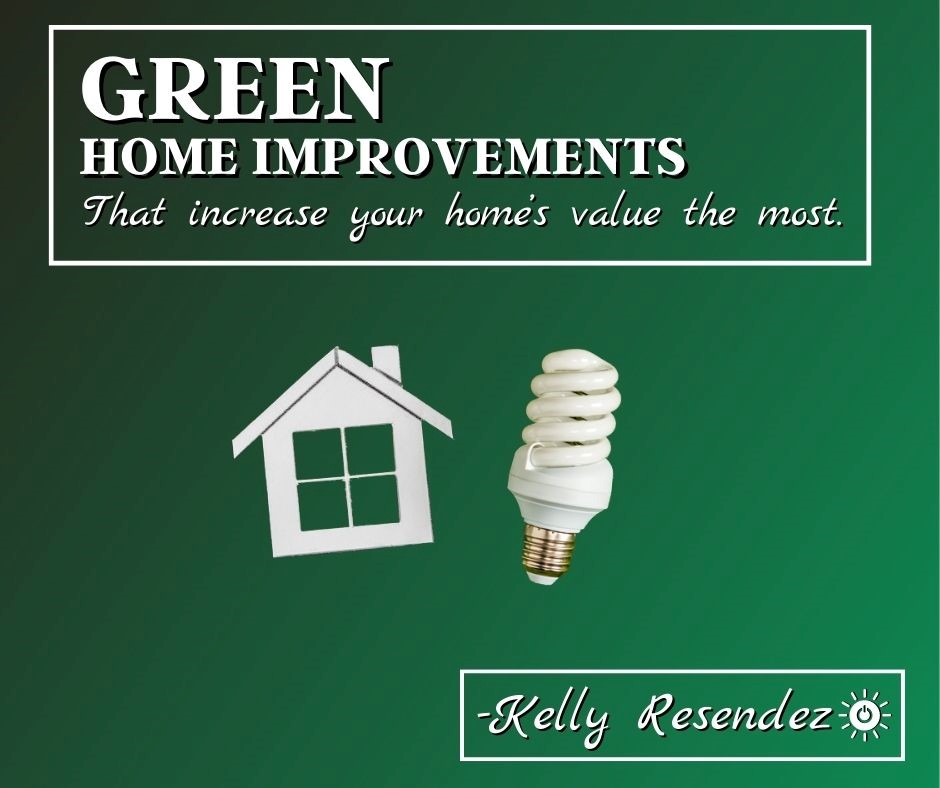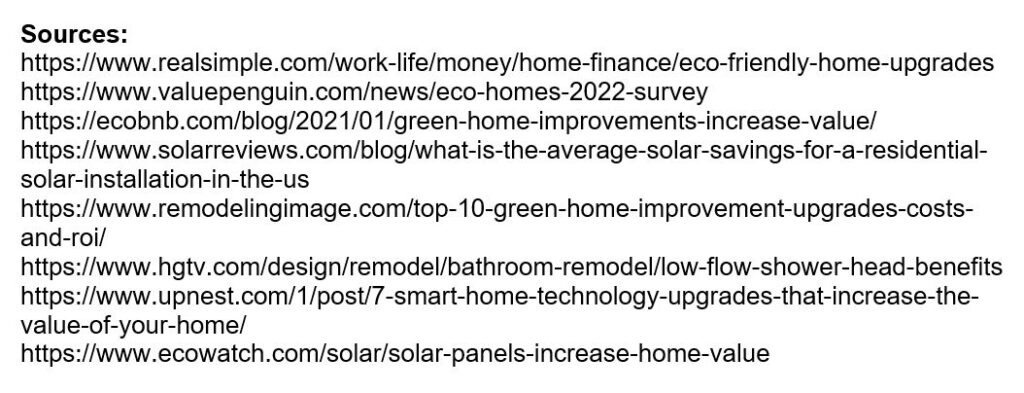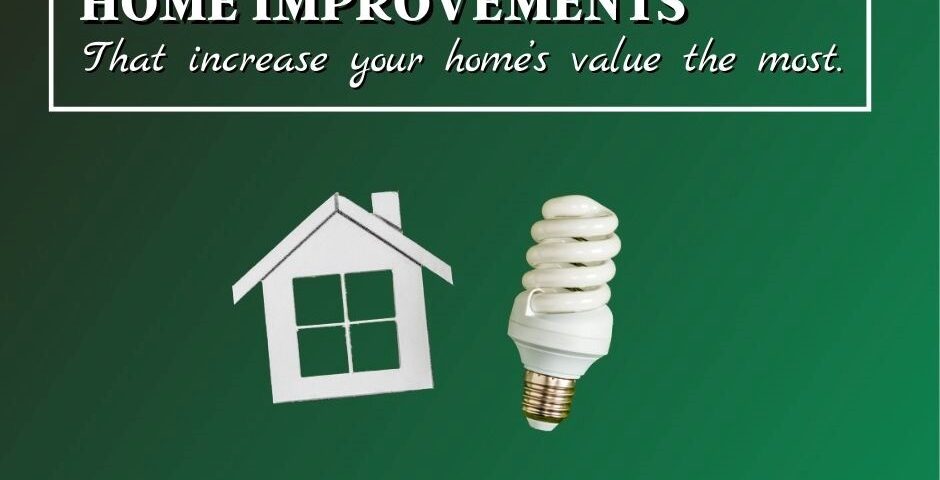
Self-regulation is the key to living your best life with anxiety.
November 15, 2022
Solar tech and trends we’ll see in 2023 and beyond.
January 15, 2023
Homeowners are going green by adding energy-saving amenities like never before, and home buyers are also prioritizing these features when searching.
Of course, most people want to do their part to help the environment by using less energy and creating fewer emissions.
But going green at home will also save you significant money on your monthly electricity bills, enhance your value if you want to refinance and have your home appraised, and will definitely boost your price tag when it’s time to sell.
A survey of those who made green home improvements recently found that 55 percent wanted to do their part to help the environment, while 50 percent said they wanted to save money, and 38 percent reported that increasing their home’s resale value was important. (Respondents could have more than one answer/motivation in the poll.)
There are plenty of estimates of the ROI you’ll receive when adding these green or eco-friendly home improvements, but I find them to be a little too vague to be useful.
The amount of money you’ll spend, the amount of money you’ll save, and the value you’ll add to your home depend on a host of factors. Those variables include where you live, your typical climate, contractor costs, whether you’re building a new home or retrofitting, the size, age, and composition of your home, the quality of upgrades, your housing market conditions, and many more.
But rest assured, these green home improvements will pay off, both in short-term savings and by increasing the price tag of your home when you look to sell.
So, let’s get right into it with the top green home improvements that add value to your home, your bank account, and also help protect our planet.
- Install solar panels.
Going green at home starts with utilizing solar power, which has exploded in prevalence and popularity in the last few years.
The cost to install varies based on your location, utility provider, tax incentives, and more, but the savings are quickly realized. Based on the average household’s energy bill, solar panels can save about $1,500 per year and typically much more in high-sunshine states like California.
Solar panels also add significant value to your home. Recent studies reveal that installing solar panels increases the average home’s resale value by $5,911 for each kilowatt of solar panels installed. Another study confirms that solar panels typically add an average of 4.1 percent to your home’s appraised value.
2. Replace windows.
Your old windows are one of the big reasons why your energy bill is so high. In fact, up to 30 percent of residential heating and cooling energy use comes from window leakage. Installing new, energy-efficient windows does come at a premium cost, but the savings will be worth it, as well as the boost to your home’s value. According to a survey by the National Association of Homebuilders, 89 percent of current buyers are looking for Energy Star-rated windows in their dream home!
3. Put in a new garage door.
We rarely put thought into our garage door, but we should if we want to save money since garage doors are one of the least energy-efficient areas of any home. Installing a new, energy-efficient garage door and adding extra insulation is the best way to stop drafts, maintain a stable temperature, improve curb appeal, and even increase home security. With the average person opening and closing their garage door 1,500 times per year, it’s no surprise that this simple home fix offers a 90 percent ROI.
4. Replace your old, wooden front door.
Research shows that improving curb appeal yields the highest ROI when it’s time to sell. So, adding a new front door will not only make a great first impression but also save you money. Replacing your older, worn front door with an Energy Star-certified model can save you as much as 10 percent on heating and cooling costs. It’s also recommended that you opt for a new fiberglass door over steel or wood.
5. Properly insulate your garage and attic.
Many homes aren’t properly insulated, especially in cold weather climates and particularly in garages and attics. Heat loss or even cold air loss that overworks your air conditioning can really run up energy bills. So, by adding an extra layer of eco-friendly spray insulation with a higher R-value, you’ll save monthly and also enhance your home’s worth.
6. Install a tankless water heater.
Taking out your archaic, rusty water heater and installing a sleek new tankless heater can immediately save you about 20-50 percent on your monthly energy bills. Tankless systems also last about 20 years, much longer than a traditional water tank. Home buyers who are interested in savings and helping the environment will also appreciate that you switched to a new tankless system, helping you sell for more.
7. Switch to Energy Star eco-friendly appliances.
Energy Star is not a single brand but a rating system for home energy efficiency. Updating your appliances in the kitchen, bathroom, and laundry room to Energy Star-rated machines will save water and electricity and also catch the eye of potential buyers, adding value.
For instance, an old, inefficient refrigerator will cost you an additional $900 per year in energy costs, and your old dryer uses the most energy of all home appliances!
It’s estimated that just by swapping out your appliances to new models, Americans could collectively save $4.8 billion per year and prevent 41 billion pounds of greenhouse gas emissions. That’s the equivalent of taking 4 million cars off the road, according to the EPA!
8. Have a skylight installed.
Most people don’t realize that about 40 percent of your home’s total energy usage comes from lighting and lightbulbs. Some rooms may have little or no natural light, leading you to flip the switch frequently and use far more electricity.
A skylight will not only help you save on energy bills in those poorly lit spaces, but really increase your home’s worth. Skylights are no longer common so they add value above and beyond your neighbor’s house, adding an element of modern design while helping protect the environment in some fashion.
9. Add radiant flooring in the bathroom.
Now we’re going from utility to luxury! However opulent it may seem, adding radiant flooring still pencils out when it comes to saving on heating costs (particularly in colder climates) and can be a highly sought-after amenity for potential buyers (or the appraiser). The actual radiant flooring system isn’t even expensive – it’s the construction costs and tearing up the bathroom floor that’s the brunt of the burden, but it’s well worth it!
10. Other quick, inexpensive green home improvements.
There are other quick, easy, and inexpensive ways to save money and help the environment, plus add equity.
- About 50 percent of your home’s total water use comes from the bathroom, and 30 percent is just from showers. Low-flow toilets and showerheads allow the average household to save about 2,900 gallons of water every year, and they’re also a selling point whenever you list your home.
- Smart homes are all the rage with homebuyers, and simply adding a smart thermostat like the Nest will cost about $249 but save you an average of $179 per year in energy bills.
- Smart power outlets allow you to identify and turn off “phantom loads” which occur from certain systems, electronics, or appliances even when they’re off.
- Switch your lightbulbs to eco-friendly LED bulbs, which use 75 percent less energy than normal bulbs.
- Plant shade trees and convert to draught-tolerant landscaping, which uses about 1/10th of the water of a lawn. These will add to your curb appeal, enhance your home’s value, and save you significant money on the water bill (especially in California!). Your city may even have a program to plant free shade trees on your property.
Having worked in the industry for a long time, I’m a big believer in clean energy and going green at home. So, feel free to contact me if you have specific questions or are looking for recommendations.




